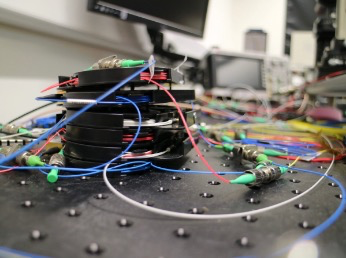- Turkcell teams with Juniper Networks and ID Quantique to run a quantum‑safe 5G encryption proof‑of‑concept.
- The trial shows quantum‑key distribution (QKD) working with Juniper’s IPsec/MACsec, safeguarding timing and data without performance loss.
What happened:Project launch & quantum‑safe encryption
Turkcell announced on June 26, 2025, that it teamed up with Juniper Networks and ID Quantique to complete a proof‑of‑concept (PoC) quantum‑safe 5G security trial. The PoC used quantum key distribution (QKD) alongside Juniper’s IPsec and MACsec frameworks to protect critical network elements like Precision Timing Protocols (PTP) and data without slowing down performance.
The trial relied on a virtual key management system that integrates with ID Quantique’s Clavis XG transmitter and Clarion KX key manager. These tools generated and distributed quantum keys to encrypt 5G links over Juniper’s infrastructure. The team validated that secure data exchange and precise network synchronization can coexist in a high-speed mobile environment.
This is one of the telecom industry’s first practical attempts to merge quantum technologies with operational network security protocols. Juniper CTO Raj Yavatkar highlighted it as a milestone in protecting future networks from post-quantum threats.
Also Read: UK startup KETS develops compact quantum security for telecoms
Also Read: ESA and Hispasat launch Satellite Quantum Security Trial
Why it’s important
This proof‑of‑concept could be a turning point for telecom cybersecurity. With quantum computing threatening to break current encryption schemes, deploying QKD ensures networks remain protected even as algorithms evolve. The trial shows it is possible to safeguard both timing and data layers without degrading performance—critical for 5G, where low latency and synchronization are essential.
It also demonstrates that quantum integration is no longer just theoretical. Turkcell’s test shows commercial operators can begin exploring quantum-ready systems with existing hardware and encryption tools. This lowers barriers for adoption and could make QKD-based protection part of telecom standards in the next decade.
For governments and enterprises requiring ultra-secure networks—such as defense, finance, and infrastructure—this validates that telecom-grade quantum encryption is feasible, scalable, and compatible with legacy networks.

